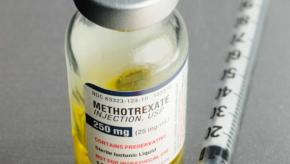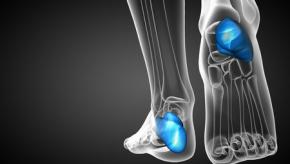Blogs
Best of 2022: Methotrexate in PsA
Until the publication of the SEAM trial, evidence in the medical literature for the efficacy of the most commonly used drug for psoriatic arthritis worldwide, methotrexate, has been lukewarm at best. Yet we all employ it commonly, either as monotherapy or in combination with biologic or targeted synthetic DMARD treatment. It is inexpensive and widely available, and only modestly toxic.The Best Prescription
The craziest question that you can ask any doctor is “what is your best therapy for __?”. Crazy, because there are exponential answers, with factored layers that make each decision unique to that doctor. Each doctor has her own cha-cha-cha algorithm to a particular problem. The problem is, we each dance to a different cha-cha-cha tune in the practice of medicine.From the Archives: Rheumatology Dead Word Cemetery
I recently heard of a secondary school assignment wherein students were challenged to “bury” a word that was no longer useful or appropriate. Their exercise has now evolved into an unofficial RheumNow task force to retire diagnostic terms that have grown into misuse in rheumatology and medicine. How did we decide which words should perish? And by what criteria? Who has the final say?Still's disease: paediatrics to adults, a continuum or not?
Dr. Ilenia Di Cola and Dr. Piero Ruscitti
The Still’s Continua
The concept of a “Still’s disease continuum” that encompasses both sJIA and AOSD is based on the many common clinical, genetic and laboratory features shared by both sJIA and AOSD.
AOSD: complicated disease or a disease with complications?
Many clinicians may not have seen a case of AOSD during training, which overall leads to several delays in referrals and appropriate diagnosis for AOSD patients. AOSD is an autoinflammatory disease where innate immunity plays a primary role and is characterized by seemingly unprovoked inflammation, but without the high-titer autoantibodies or antigen specific T cells seen in autoimmune diseases.2021 GRAPPA Recommendations - Looking Back, Looking Forward
With the recent publication of the third iteration of the GRAPPA Psoriatic Arthritis (PsA) treatment recommendations, it seems to be an auspicious time to reflect on some key considerations that arose during the development of the recommendations, as well as to look towards what the future may hold.ICYMI: Who is Your Glue?
I’ve often talked about the nurses in my clinic as being the glue, the clinic glue, my personal glue. Without them, the day and task would never go as well and just might crash and burn, if not for their steadying influence.Five Mistakes When Diagnosing Still’s Disease
Adult-onset Still's presents an interesting and diagnostic challenge when encountered. Here are 5 tips to improve your diagnostic acumen for this febrile disorder.
A Domain-Based Approach to the GRAPPA Psoriatic Arthritis Treatment Recommendations
With their publication in June 2022 (1), the 3rd iteration of the Group for Assessment of Psoriasis and Psoriatic Arthritis (GRAPPA) Treatment recommendations for Psoriatic Arthritis (PsA) may have set a record or sorts.











